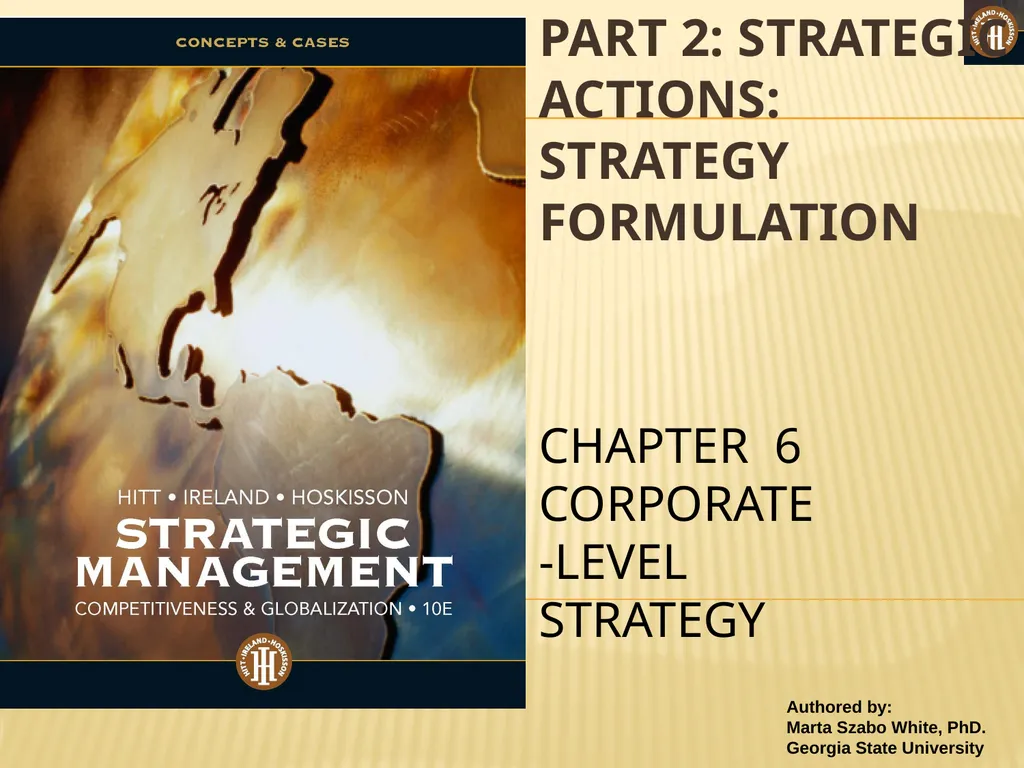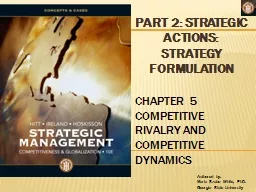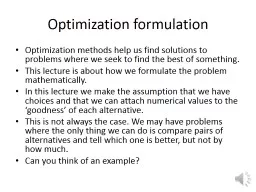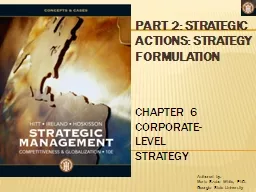PART 2: STRATEGIC ACTIONS: STRATEGY FORMULATION
Author : sherrill-nordquist | Published Date : 2025-06-23
Description: PART 2 STRATEGIC ACTIONS STRATEGY FORMULATION CHAPTER 6 CORPORATELEVEL STRATEGY THE STRATEGIC MANAGEMENT PROCESS KNOWLEDGE OBJECTIVES KNOWLEDGE OBJECTIVES GENERAL ELECTRIC THE QUINTESSENTIAL DIVERSIFIED FIRM GE competes in 16
Presentation Embed Code
Download Presentation
Download
Presentation The PPT/PDF document
"PART 2: STRATEGIC ACTIONS: STRATEGY FORMULATION" is the property of its rightful owner.
Permission is granted to download and print the materials on this website for personal, non-commercial use only,
and to display it on your personal computer provided you do not modify the materials and that you retain all
copyright notices contained in the materials. By downloading content from our website, you accept the terms of
this agreement.
Transcript:PART 2: STRATEGIC ACTIONS: STRATEGY FORMULATION:
PART 2: STRATEGIC ACTIONS: STRATEGY FORMULATION CHAPTER 6 CORPORATE-LEVEL STRATEGY THE STRATEGIC MANAGEMENT PROCESS KNOWLEDGE OBJECTIVES KNOWLEDGE OBJECTIVES GENERAL ELECTRIC: THE QUINTESSENTIAL DIVERSIFIED FIRM ■ GE competes in 16 different industries: appliances, aviation, consumer electronics, electrical distribution, energy, entertainment, finance, gas, health care, lighting, locomotives, oil, software, water, weapons, and wind turbines ■ GE’s businesses are grouped in four divisions: GE Capital, GE Energy, GE Technology Infrastructure, and GE Home & Business Solutions OPENING CASE GENERAL ELECTRIC: THE QUINTESSENTIAL DIVERSIFIED FIRM ■ With more than 50 percent of its annual revenues stemming from its financial services, GE is the only company that was listed in the initial Dow Jones Industrial Average in 1896 that remains on it today. Criticisms: ● Media control - GE has restricted NBC reporters from reporting on certain content that is critical of GE OPENING CASE GENERAL ELECTRIC: THE QUINTESSENTIAL DIVERSIFIED FIRM Criticisms (cont’d): ● Poor environmental records of some of its businesses ● GE had reductions in stock value during the first decade of the twenty-first century ■ Today, a major player in the “clean energy” industry, GE is well-positioned to capitalize on emerging economies via a diversification strategy of mergers and acquisitions in Brazil and China OPENING CASE CORPORATE–LEVEL STRATEGY: WHAT BUSINESSES SHOULD A FIRM COMPETE IN? TWO KEY ISSUES 1. In what product markets and businesses should the firm compete? 2. How should corporate headquarters manage those businesses? IMPORTANT DEFINITION CORPORATE–LEVEL STRATEGY: WHAT BUSINESSES SHOULD A FIRM COMPETE IN? ■ Specifies actions a firm takes to gain a competitive advantage by selecting and managing a group of different businesses competing in different product markets ■ Corporate-level strategies help companies select new strategic positions that are expected to increase the firm’s value ■ Firms can pursue defensive or offensive strategies that realize growth, and may have different strategic intents IMPORTANT DEFINITION CORPORATE–LEVEL STRATEGIES ■ MARKET DEVELOPMENT - moving into different geographic markets ■ PRODUCT DEVELOPMENT - developing new products and/or significantly improving on existing products ■ HORIZONTAL INTEGRATION - acquisition of competitors; horizontal movement at the same point in the value chain ■ VERTICAL INTEGRATION - becoming your own supplier or distributor through acquisition; vertical movement up or down the value chain IMPORTANT DEFINITIONS CORPORATE–LEVEL STRATEGY: ULTIMATE VALUE QUESTION CORPORATE-LEVEL STRATEGY’S VALUE ■ Corporate-level strategy’s value is ultimately determined by the degree to which “the businesses in the portfolio are worth more under the














